Finding new plants to grow throughout your landscaping can sometimes be challenging. Do you want to try planting a hosta below one of the trees in your yard but don't know if it can grow in those conditions? Are hostas generally shade-tolerant?
We will answer all of these questions and many others below in this post. Let's get into everything!
In general, you can successfully grow a hosta below a tree or in a heavily shaded area. However, the type of tree you have your perennial under can affect its growth and health, so not every species will be compatible.
You also want to avoid planting hostas in extremely dense soil, like clay, as it needs good drainage to survive in such shady locations.
As we begin, we will cover all things hostas and discuss if you can plant one underneath a tree. We will also cover which specific tree species are hosta friendly and which aren't. With that said, let's dive right into this article!
![photo of a green-bush-hosta-leaves-beautiful-background healthy leaves, Will Hostas Grow Under Trees? [Inc. Pine, Walnut, Maple, Cedar & More]](https://gardentabs.com/wp-content/uploads/2022/09/Will-Hostas-Grow-Under-Trees-Inc.-Pine-Walnut-Maple-Cedar-More.png)
Can You Grow Hostas In The Shade?
Yes, hostas will usually tolerate partial and even full shade, depending on the climate and soil conditions. As we mentioned, you can also generally plant hostas beneath a tree, making for a great ground covering species.
It's also worth noting that hostas don't enjoy hot weather or direct contact with the sun. If you have one in the full sun, it's more likely for it to become burned or even die entirely.
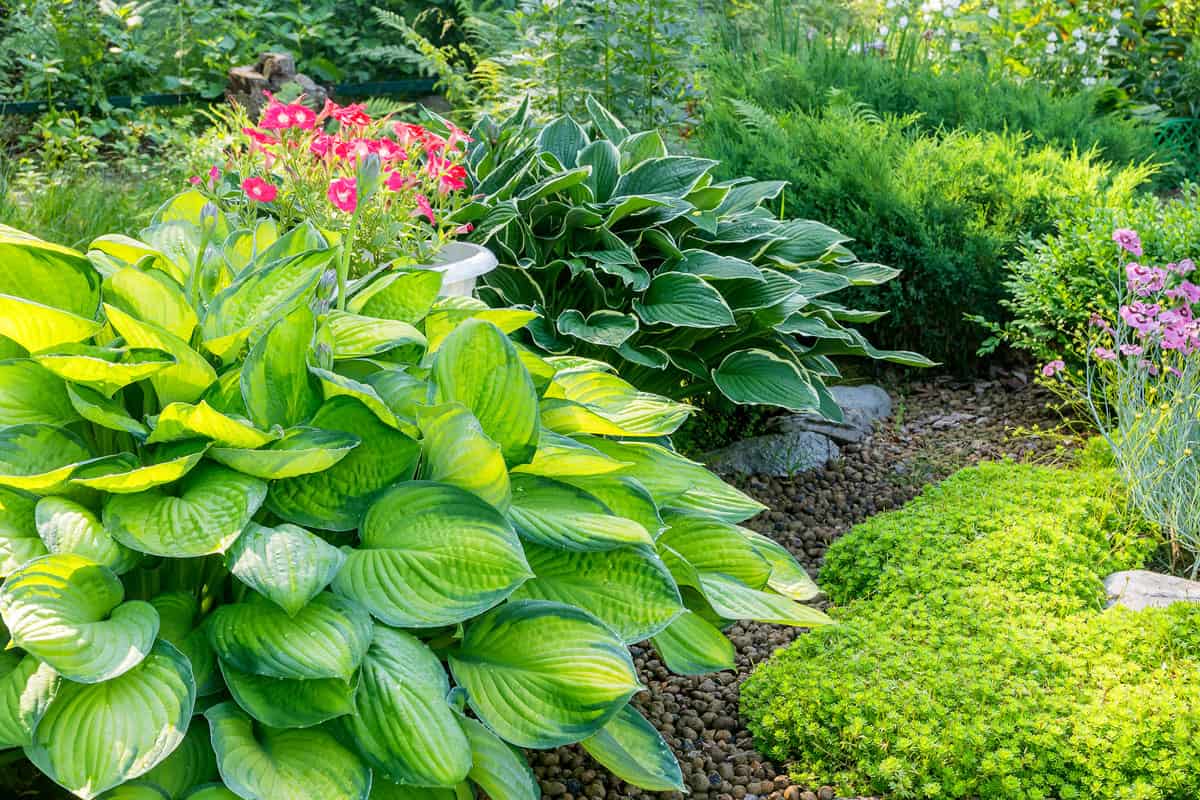
The soil is one of the most important factors to consider with this plant species. If your garden has clay or dense ground, your hosta may reject it.
You want to make sure your plant has good drainage, considering it's not going to have much help from the sun's rays. Shaded plants can quickly become waterlogged and die, so this is critical.
Is It Okay To Plant A Hosta Underneath A Tree?
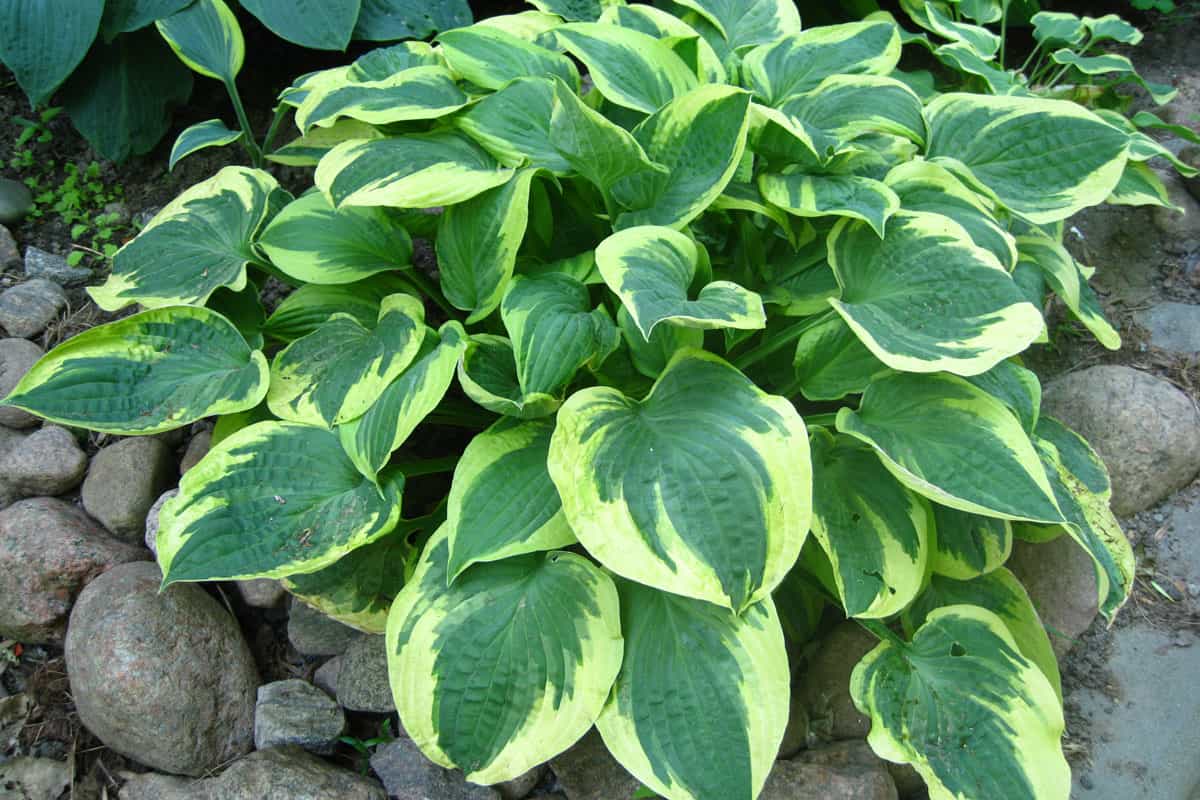
Yes! Most times, you should be fine planting your hosta below a tree. Of course, this can depend on the tree species, and how it grows/develops roots, so not all trees are compatible.
Generally, hostas prefer trees that don't have super shallow roots. That's because the roots of your hosta need their own space to develop and sprawl.
If another plant's root system becomes entangled in hostas, this is when issues can arise.
Typically, whichever plant is stronger will overpower the weaker link (so, the hosta if we're talking trees), resulting in a dead hosta.
So, trees with deeper roots versus artificial rooting are preferred.
On top of that, you might also need to add organic matter around your hosta if it's under a tree, so it gets nutrients. Trees can be demanding on the soil, often resulting in fewer nutrients and energy for the plants nearby with smaller root systems.
What Trees Can You Grow Hostas Under?
Now that you know the basics, let's dive into which tree species you can (or can't) grow hostas beneath:
Pine Trees
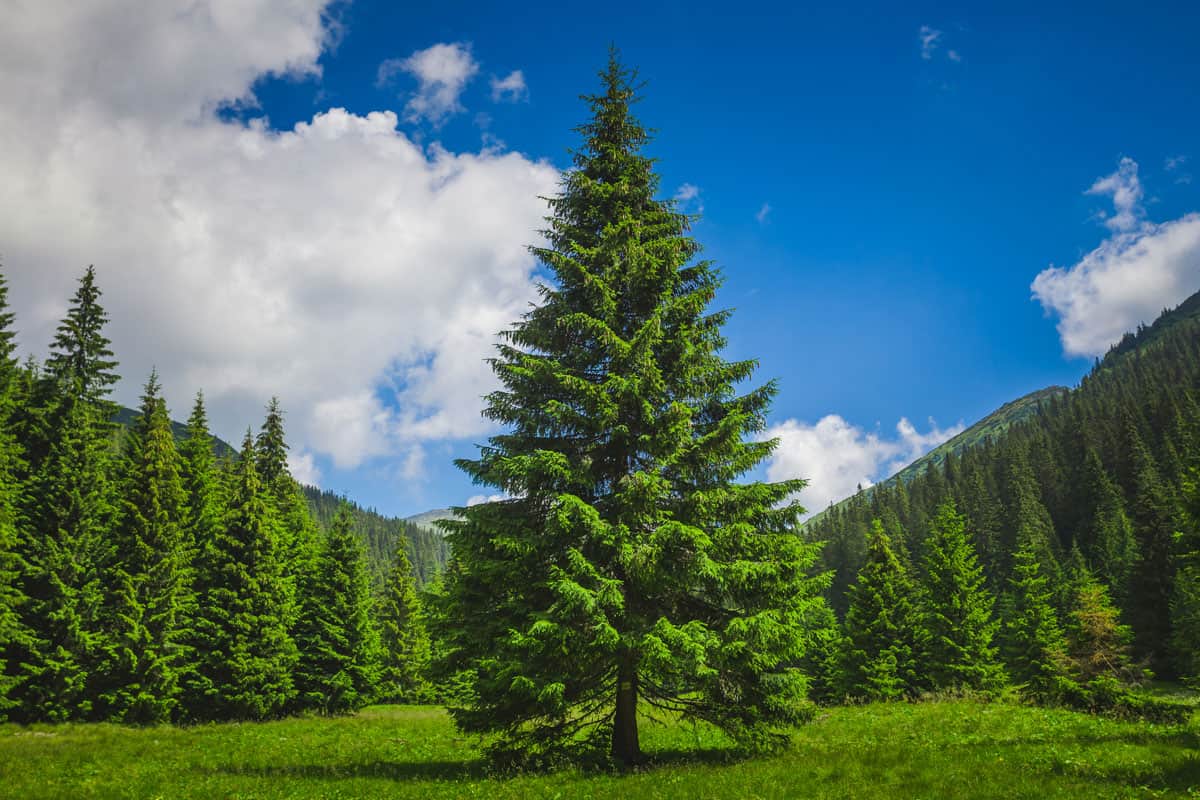
Yes! If you want to try growing a hosta below a pine tree, this is perfectly fine to do. Generally, your pine tree and hosta won't fight for ground space, making them a perfect pairing.
However, you will need to regularly apply mulch and organic matter to the soil around a hosta if it's under a pine tree.
You may even want to fertilize your hostas routinely to help them reach a mature size, so there is more maintenance under a pine versus not underneath one.
Furthermore, you need to keep your hosta well watered, but not to the point its roots become over-saturated. Remember, the shade from the pine tree will block the sun, making it harder for large amounts of water to drain.
Walnut Trees
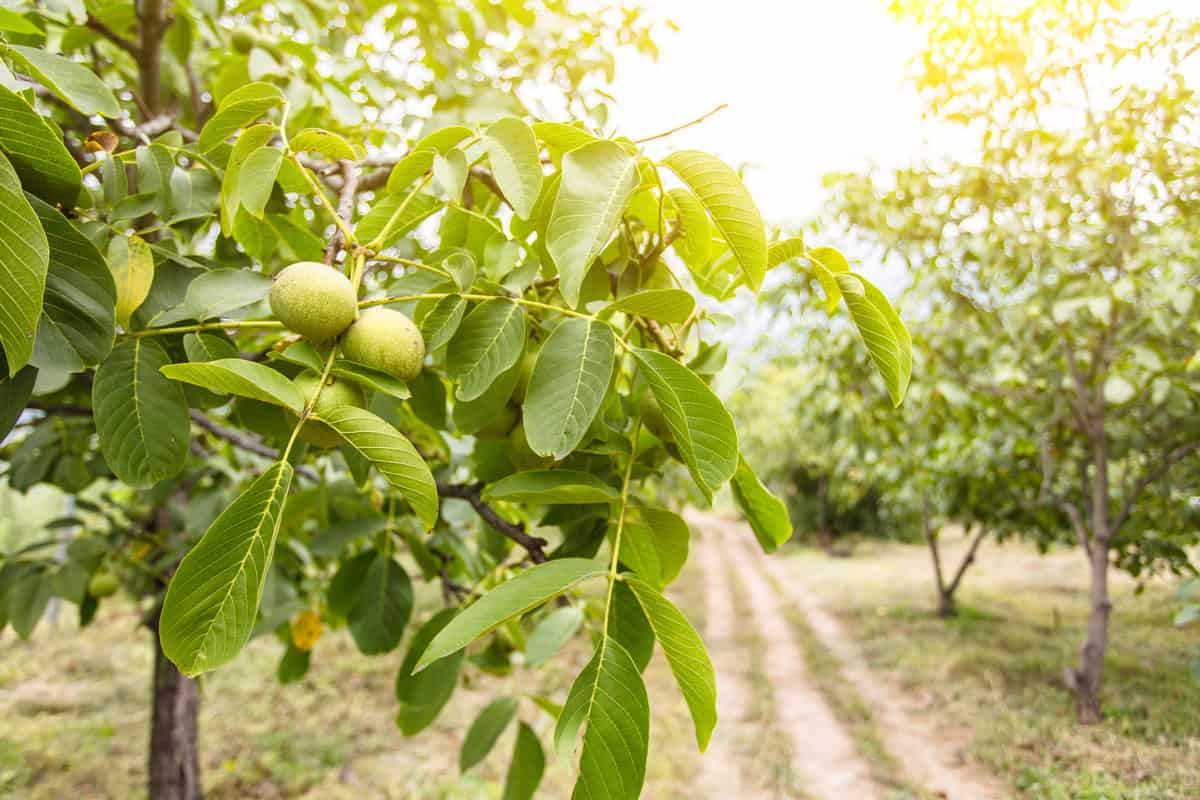
This is also safe if you want to try growing hostas below a walnut tree. Although some walnut varieties produce the toxic compound juglone, your hosta won't mind it.
That's because this ground-covering species is incredibly hardy. It's also good to know that hostas are generally drought-tolerant, so if your walnut tree absorbs most of the water, it shouldn't harm your hosta.
You also want to know that hostas can grow alongside/under walnut trees throughout USDA zones four through nine, so keep that in mind when planting.
It's surprisingly very common to see hostas underneath black walnut trees, as they are one of the few perennials that can tolerate those conditions.
Maple Trees
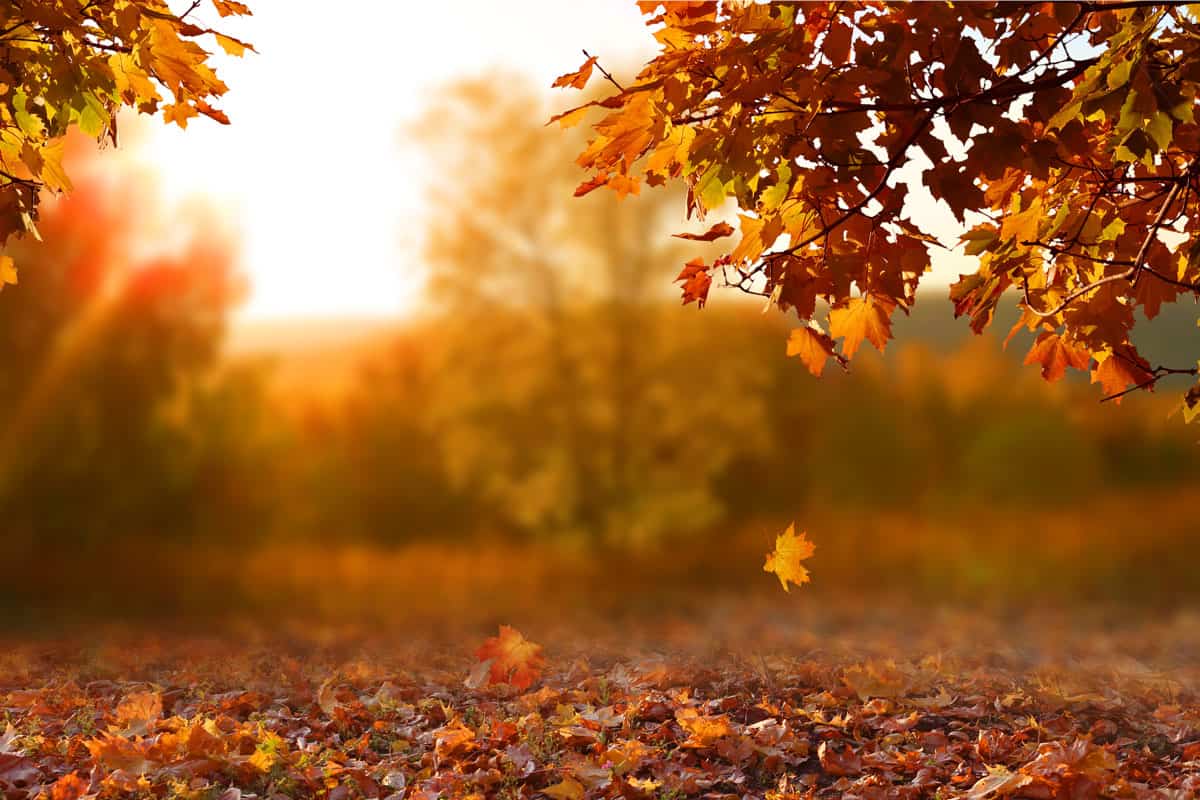
When it comes to growing hostas below a maple tree, this is when things can get sticky. Although you can sometimes have a successful hosta under your maple, due to your tree's shallow roots, problems are more likely to happen.
As we mentioned, hostas don't like competing directly with other plants for ground space. So, having one alongside or underneath a maple tree won't usually work.
Again, you can try it, but we wouldn't recommend taking the risk.
Cedar Trees
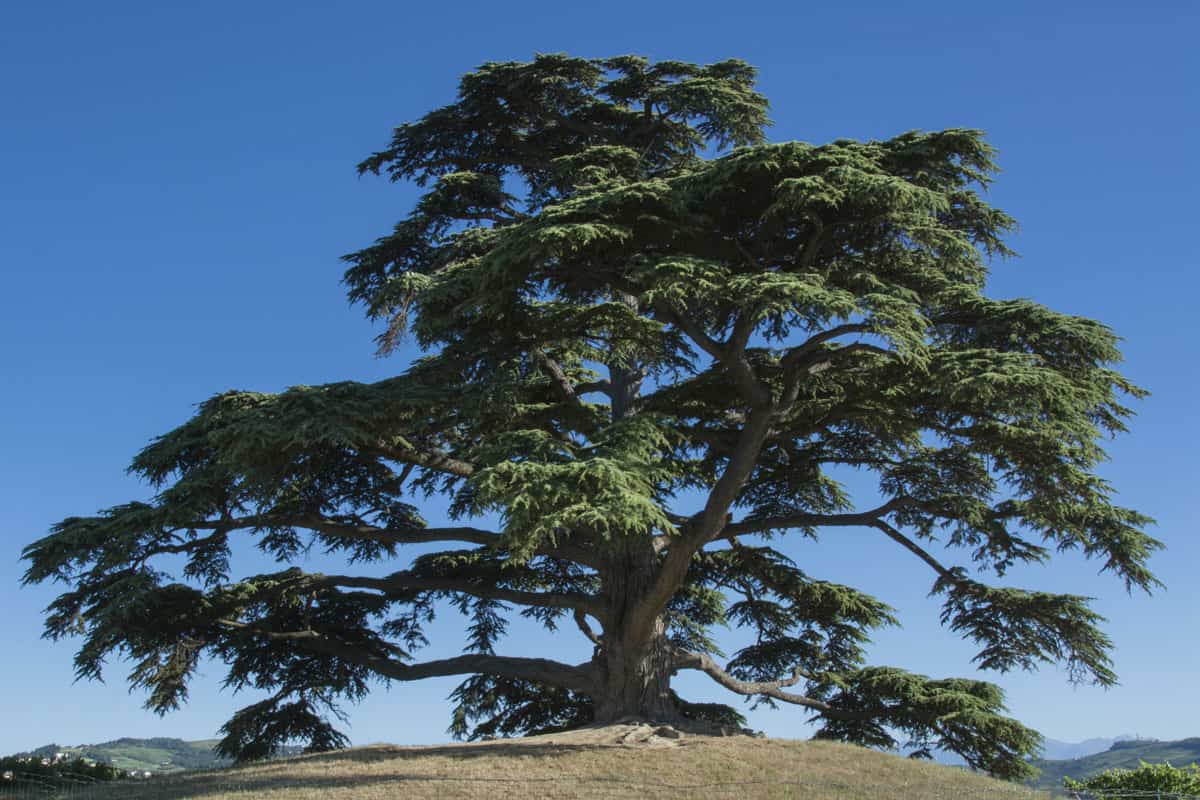
Yes, if you have a "true" cedar tree (like Himalayan cedar), you can successfully grow hostas underneath. Again, this is a situation where certain cedar varieties can pair nicely with ground-covering plants while others can't.
Another good cedar variety for the hosta is red cedar (Juniperus virginiana), so you have some good options. The key here is finding cedar trees that don't have incredibly invasive or shallow roots.
It's also worth noting that the expansive canopy from your cedar will keep a hosta dry, which isn't always a good thing in some climates.
For example, if you have a cedar tree above your hosta in a more desert-prone USDA zone, you will need to water it more often.
Vice versa, you will need to water your hosta less in a rainier climate if the canopy of your cedar doesn't allow any sun to dry up the excess water in the ground.
Eucalyptus Trees
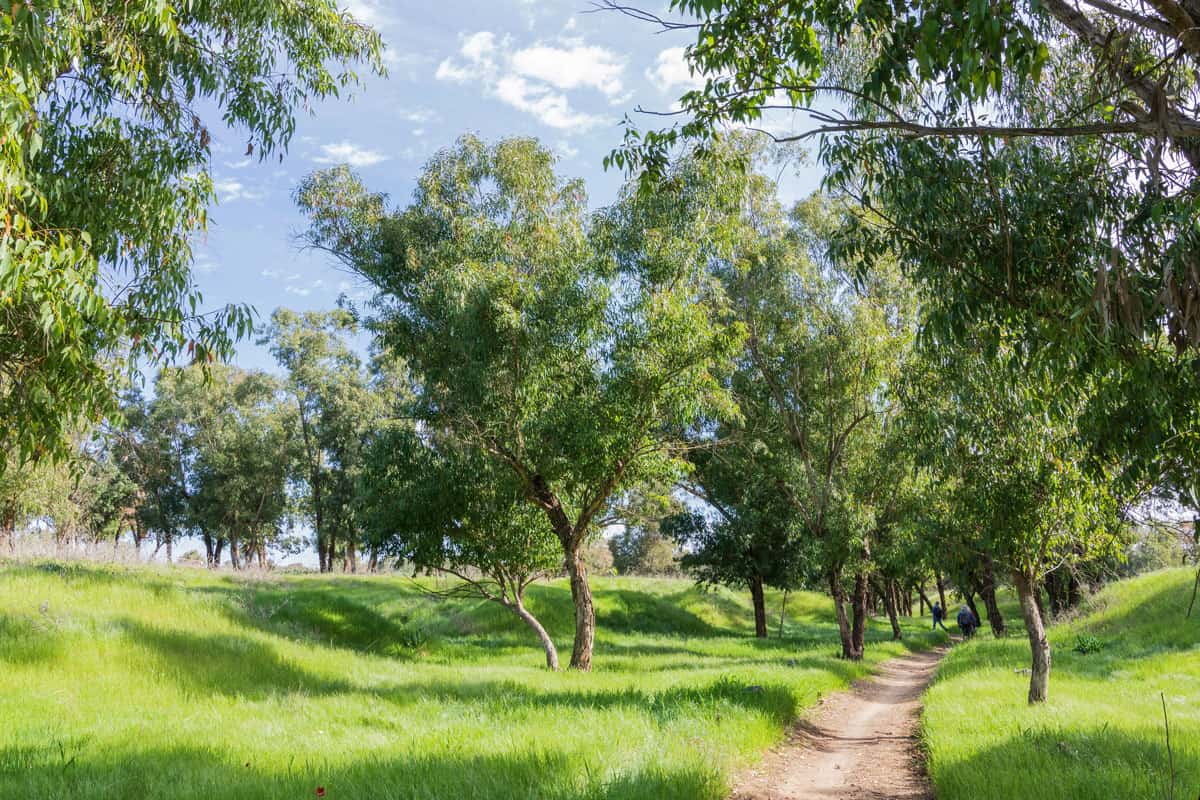
No, in general, you won't be able to grow hostas successfully below a eucalyptus tree. Like most ground covers, hostas don't respond well to the shallow, invasive roots a eucalyptus typically has.
It's not uncommon for plants to die when near gum trees, so eucalyptus should be on its own. You also want to factor in how much bark a eucalyptus sheds throughout the year, which can fall onto your hostas and damage them.
So, we recommend steering clear from this pairing in your garden.
Aspen Trees
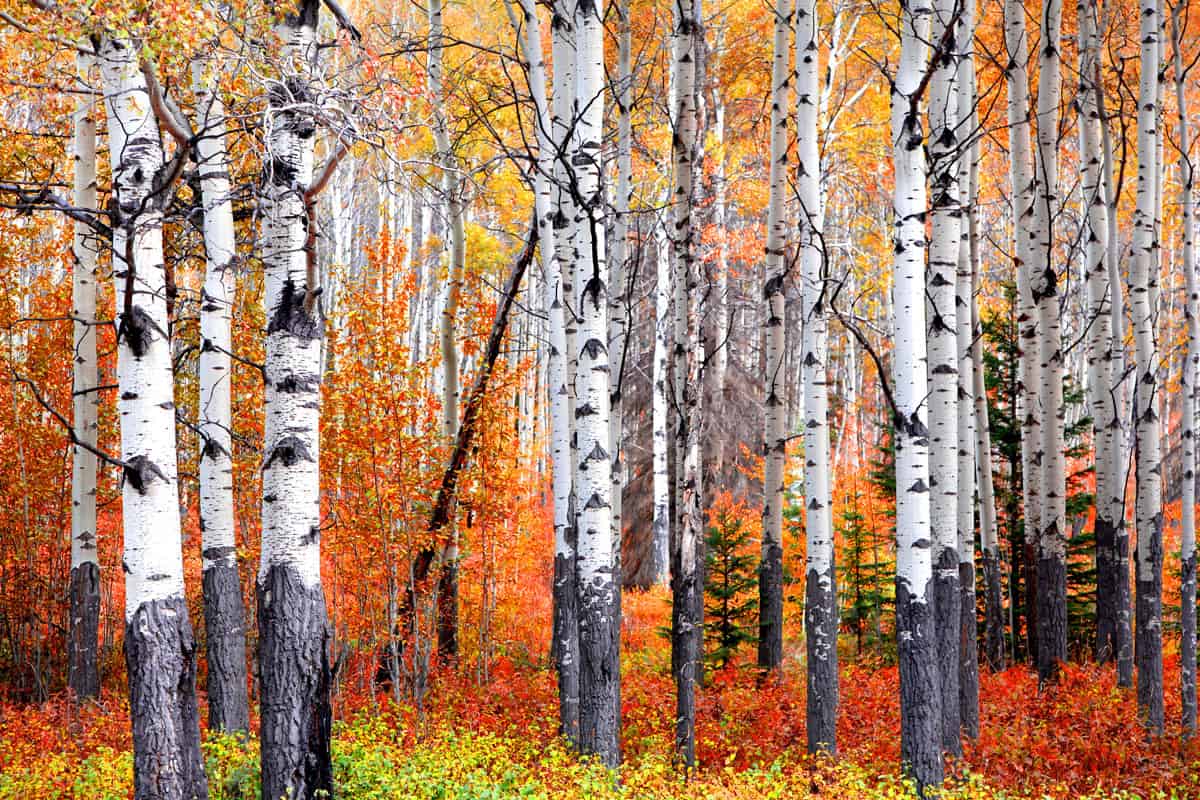
This can be hit or miss when it comes to growing hostas under aspen trees. Usually, aspens will have shallow root systems, often sprawling as much as 30 feet from the tree base.
That can spell trouble for your hostas if they're too close, so we don't recommend this pairing.
Of course, this can bubble down to how the soil in your garden responds to the two separate root systems competing for space and nutrients, but you don't generally want to introduce that in the first place.
The shallower the tree's roots, the less successful a hosta will be.
Are Hostas Easy To Grow?
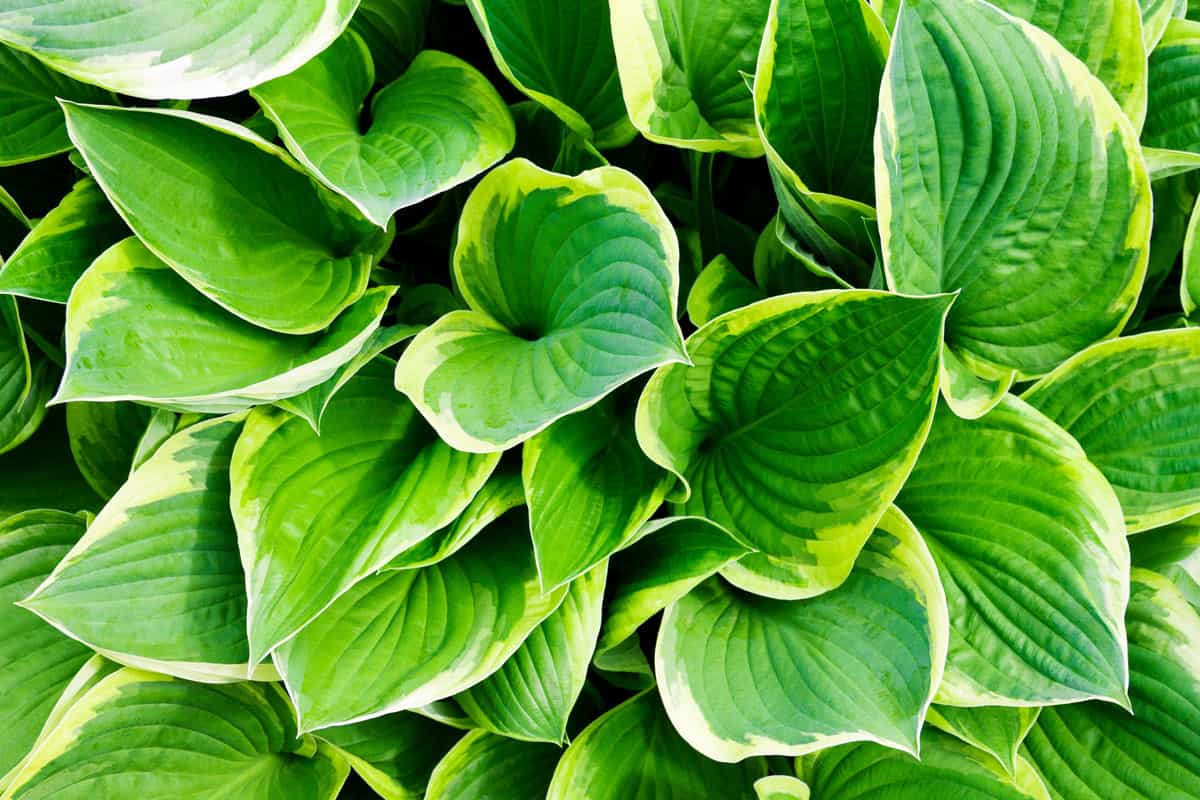
Overall, we would agree that hostas are easy to grow and manage. Besides being incredibly hardy and tolerant to the shade, these ground covers don't mind a bit of healthy competition.
These plants live indefinitely, often getting bigger and more beautiful as they age. Therefore, hostas are certainly a great option to consider if you want a durable option for your landscaping.
It's also worth mentioning how little attention hostas prefer. Ideally, you won't try and divide your plant or prune it, as this can cause it to become less vibrant.
Instead, avoid removing parts of your plant and let it sprawl over time. Hostas can even handle periods of drought, so they work in almost all types of growing zones.
Where Do Hostas Grow Best?
The best location for hostas is somewhere with partial or complete shade. As we covered, these ground-covering perennials don't mind a bit of shade and can thrive underneath trees.
In addition, hostas can withstand early morning sun exposure but prefer to be entirely covered throughout the afternoon.
You also need to ensure the soil in your garden is highly fertile if you want to grow a hosta. This species also doesn't like compacted or heavy clay grounds, so you might need to do some amending before planting.
It's also generally a good idea to give your hosta mulching or add organic matter, like compost, to its base throughout the year. The more nutrients, the better.
How Big Do Hostas Get?
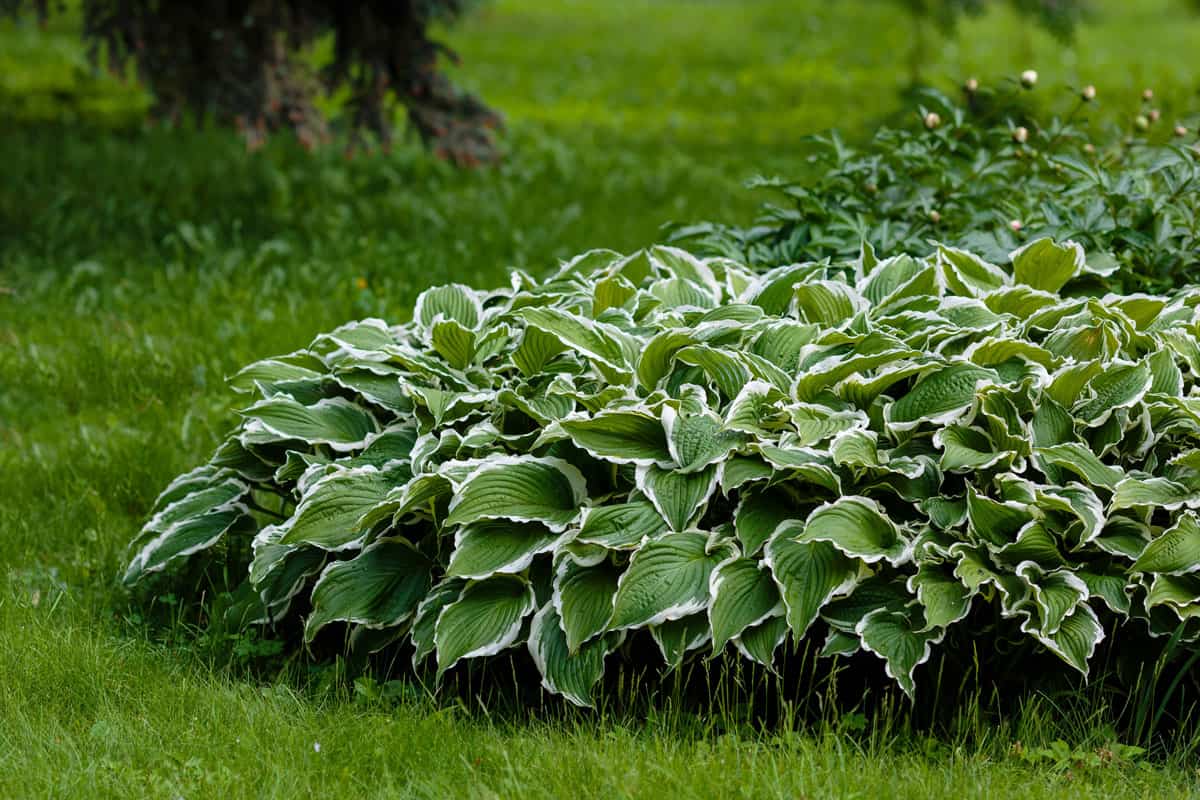
You can usually expect a hosta to have a total spread of around one to three feet. That said, not every hosta has the same growth pattern, so it's possible for yours to exceed that size.
One of the stand-out features of hostas is their leaves. The common colors of these plants' foliage include variegated white, lime green, and blue-green, which can certainly add some vibrance to a landscape.
The mature size of your hosta will also depend on how you care for it. So, if you regularly water, fertilize, and leave your hosta's foliage alone, it should become pretty big.
To Finish It Up
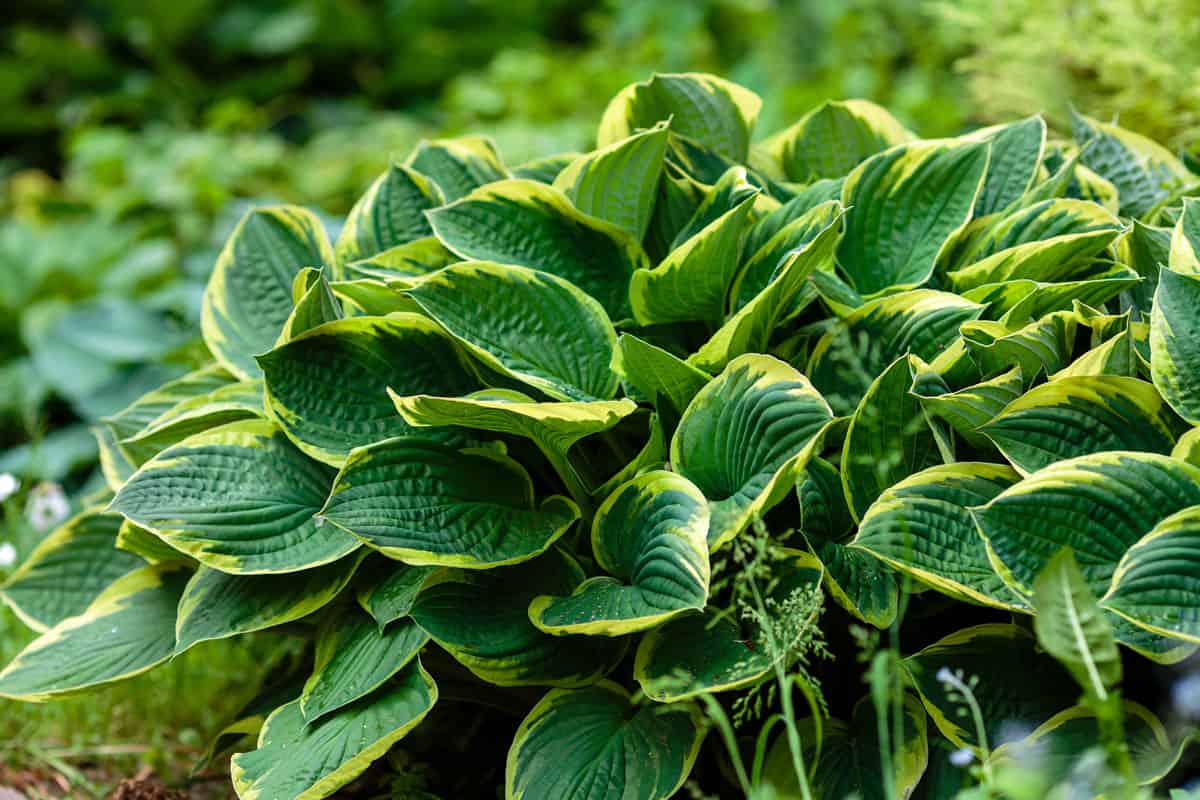
Whether you want to plant a hosta below your tree or already have one growing, it's good to know how this works. We found that although you can generally plant hostas under trees, not all species are compatible.
Specifically, you can plant a hosta beneath a pine, walnut, and cedar tree, to name a few. On the other hand, we don't recommend planting hostas below aspen, eucalyptus, or most maples.
So, this can get a little tricky, but remember that hostas don't like trees with shallow roots.
Made it to the end? Check out these helpful related articles below!
Do Deer Eat Hostas? [And How To Prevent It]
